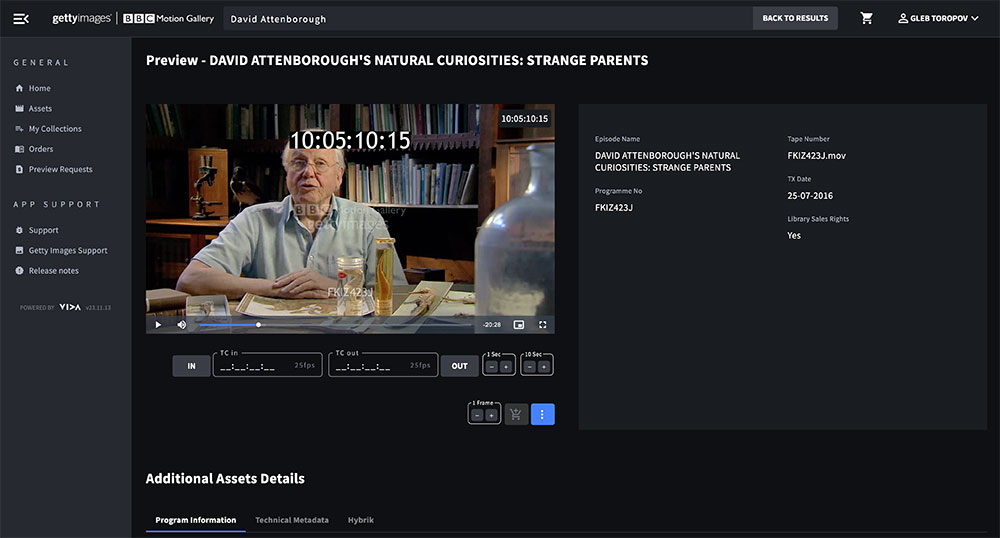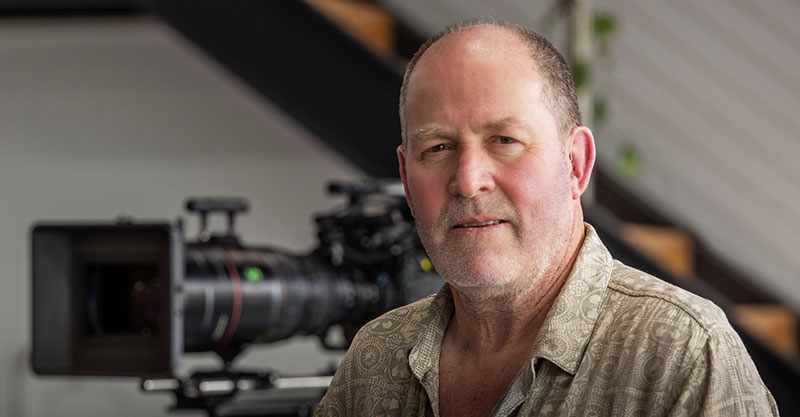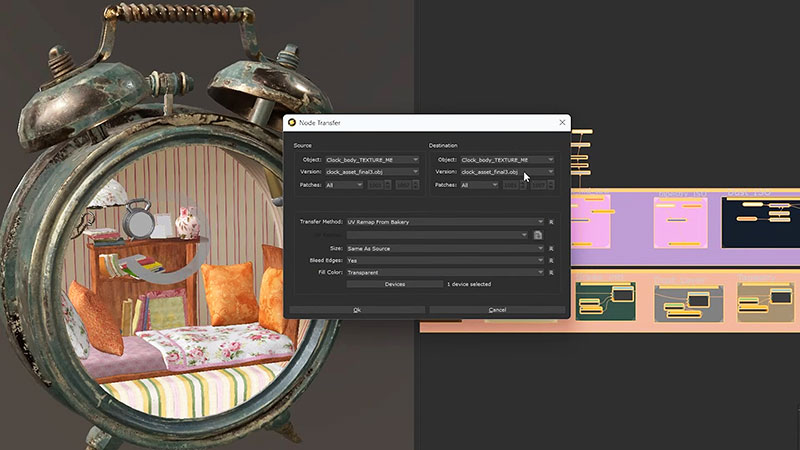VIDA’s Symon Roue talks about Getty Images and BBC Studios new platform for online access to BBC’s programme archive, combining clients’ search, purchase and download experience.

Getty Images and BBC Studios, the commercial subsidiary of the BBC, have launched a new platform giving customers a single, combined search, purchase and download experience that allows greater access to BBC archive video.
Designed to assist end-users to select and order content, the platform is based on media asset management software developed by VIDA Content OS. It gives access to over 57,000 programmes from the BBC Motion Gallery, the footage licensing division of BBC Studios, which was previously only available offline by an entirely manual process. Customers can now securely search the entire digitised library, view, annotate, clip, share and download previews for use within projects. After clearance, the high-resolution masters are available immediately.
Curation and Programme Development
Curated collections relating to upcoming events and trends for commissioning can help users build on their ideas. Programme producers can use the platform’s Speech to Text tools to search the transcripts of all of the assets, locating specific, desired content from BBC Motion Gallery’s massive archive within a few seconds.
With BBC Studios’ goal of delivering BBC content into the hands of programme makers around the world, Head of BBC Motion Gallery Chris Hulse said, “This new platform marks a turning point for BBC Studios, surfacing a wealth of previously offline BBC content, now accessible on-demand for the first time.”

VIDA's Managing Director Symon Roue talked through the process of setting up the new system. Describing the relationship between the three companies, he said, “BBC Studios Motion Gallery supplies us with high resolution files, which VIDA hosts. These files are normalised to specific codecs prior to or during ingest into VIDA. The BBC still maintains its own archives, where all its originals are kept, and we manage the archive workflow, which is monetised by Getty Images.”
Opening Access while Maintaining Control
Because metadata is integral to how the platform works and what it can achieve, the Motion Gallery team also has full control over the metadata as well as any AI generated output. “Like all AI systems, the preparation is key,” said Symon. “VIDA’s AI capability can supplement the metadata with our auto generated synopsis information, along with a vast array of technical metadata populated by the media analysis portion of our ingest workflow.
Not only does BBC Studios keep full control over their contact, but clients are also allowed considerable freedom when accessing and working with material they find on the VIDA Content OS platform. As well as searching through the complete library, they can view any of the files, mark clips and then annotate, download and share previews of the clips.

Managing Director Symon Roue, VIDA
Symon said, “Clients are now able to research, preview, clip up and order content instantly, 24/7, from anywhere in the world. They would only need to contact the sales team to obtain additional research, or to discuss master clips and licensing. Then once they have paid for the licenses, they can immediately access the high-resolution masters of those clips, which is a great advantage for teams facilitating fast turnaround projects.
“As the archive footage licensing industry grows year over year, customers expect an integrated and efficient supply chain for servicing of catalogue. Accessibility to the clips that matter, using the latest cloud and AI technology, is where Content OS makes the biggest difference.”
VIDA’s Content OS and Accessibility
VIDA’s accessibility is achieved automatically by analysing large volumes of video. It is capable of identifying relevant segments such as black frames, shot changes, colour bars, opening credits and so on. On the creative, research side, objects, scenes, activities, landmarks, dominant colours and image quality in images and videos can also be identified and singled out. “As AI tooling continuously improves, this data can be used in a positive feedback loop to automate and surface relevant content without having to use people to manually tag content,” Symon said.

“Collaboration is further motivation for developing VIDA’s Content OS. Multiple users in different locations can gain access to entire content libraries, sharing content through a straightforward process that until a few years ago would have been very cumbersome and taken days.” The platform has a system of secure logins, integrated screening rooms and high-resolution clip editing, and there is also a Portal Platform, which allows producers to upload materials and files, and add information.
A very practical application for service providers is automated FAST Channel and VOD delivery using VIDA’s integrated transcoding and automated metadata generation. AI-based verification tools identify and reformat data, making content more accessible and available for distribution. Symon said, “The reliance on metadata is only limited to what the end FAST channel provider needs. As mentioned above, where items such as synopsis are missing, VIDA can generate this material in seconds rather than relying on humans to fill in the gaps.” vida.studio




















